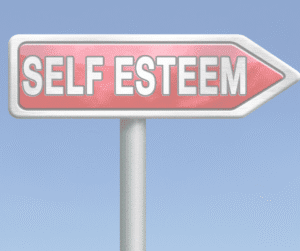The Science of Mini Workouts

The Science of Mini Workouts: Why Moving Every 45 Minutes at Work Can Transform Your Health
Modern office life often means sitting for hours at a time, an environment linked to increased risk of chronic diseases, reduced energy, and even shortened lifespan. But what if you could counteract these risks with just a few minutes of movement every hour?
Recent scientific research shows that short, frequent exercise breaks, sometimes called “exercise snacks”, can dramatically improve your health, even if you don’t have time for the gym.
Why Sitting Is So Harmful
Prolonged sitting slows your metabolism, reduces blood flow, and leads to muscle weakness, especially in the legs and core. Studies have linked uninterrupted sitting to higher risks of heart disease, diabetes, obesity, and even some cancers. But the solution doesn’t have to be complicated or time-consuming.
What the Science Says: The Power of Micro-Workouts
Multiple studies now confirm that breaking up sitting time with short bouts of activity, such as squats, stair climbing, or brisk walking, can have profound health benefits:
Blood Sugar Control:
Research shows that doing just 10 squats every 45 minutes during an 8-hour workday can help regulate blood sugar levels and reduce insulin spikes, sometimes more effectively than a single 30-minute walk. This is especially important for those at risk of type 2 diabetes or metabolic syndrome.
Cardiovascular Health:
Short, vigorous activities (even just 1–3 minutes at a time, repeated throughout the day) have been shown to lower blood pressure and improve heart health. One study found that spreading three 10-minute walks throughout the day was more effective at lowering blood pressure than one continuous 30-minute walk.
Cognitive Benefits:
Regular movement breaks, such as 5 minutes every 25–30 minutes, can boost focus, improve mood, and reduce mental fatigue by up to 16%. This means you’re not just healthier, but also more productive and alert at work.
Musculoskeletal Health:
Frequent activation of major muscle groups helps maintain strength, flexibility, and posture, reducing the risk of back pain, neck stiffness, and repetitive strain injuries common in office workers.
How Often Should You Move? Practical Guidelines
- Frequency: Aim for a short movement break every 30–45 minutes during your workday. Over 8 hours, this adds up to 8–16 mini-workouts.
- Duration: Each break can be as short as 2–5 minutes.
- Intensity: Activities should be enough to raise your heart rate slightly and engage large muscle groups.
Example Mini-Workouts for the Office
Exercise | How to Do It | Benefit |
Bodyweight Squats | 10–15 reps, slow and controlled | Blood sugar, leg strength |
Desk Push-Ups | 10–15 reps, hands on desk, feet back | Upper body, core stability |
Stair Step-Ups | 1 minute, steady pace on stairs or step platform | Cardiovascular, leg endurance |
Calf Raises | 15–20 reps, standing at your desk | Circulation, lower leg strength |
Standing Torso Twists | 1 minute, arms at chest height | Spine mobility, core activation |
March in Place | 2 minutes, high knees if possible | Heart rate, full body movement |
Tip: Pair your movement with routine activities, stand up after every email, do squats after a phone call, or stretch while waiting for your coffee.
How Do These Mini-Workouts Compare to Traditional Exercise?
Comparable Health Benefits:
Studies show that spreading activity throughout the day can be as effective, or even more effective, than a single longer workout for blood sugar control, blood pressure, and mental performance.
Greater Adherence:
People are more likely to stick with short, frequent activity than with longer workouts, making it a sustainable habit.
Prevention of Sedentary Damage:
Frequent movement helps prevent the negative effects of sitting that even regular gym-goers can experience.
The Science Behind the Benefits
Metabolic Boost:
Each movement break stimulates your muscles to absorb glucose and burn fat, keeping your metabolism active all day.
Circulation and Oxygenation:
Moving regularly improves blood flow to the brain and muscles, delivering oxygen and nutrients for better focus and energy.
Hormonal Balance:
Physical activity triggers endorphin release, reducing stress and improving mood.
Getting Started: Your Action Plan
- Set a Timer: Use your phone or computer to remind you every 45 minutes.
- Choose an Exercise: Rotate between squats, desk push-ups, step-ups, or stretching.
- Track Your Progress: Note how you feel at the end of the day or week—most people report better energy, mood, and focus within days.
- Build the Habit: Consistency is key. Even if you start with just a few breaks per day, you’ll see benefits.
Final Thoughts
You don’t need a gym or special equipment to transform your health. By incorporating short, frequent movement breaks into your workday, you can improve your metabolic health, protect your heart, boost your focus, and prevent the aches and pains of office life. Science shows that these micro-workouts are not just a “nice to have”, they are essential for anyone spending long hours at a desk.
Start today: Set a reminder, stand up, and move. Your body, and your mind, will thank you.







